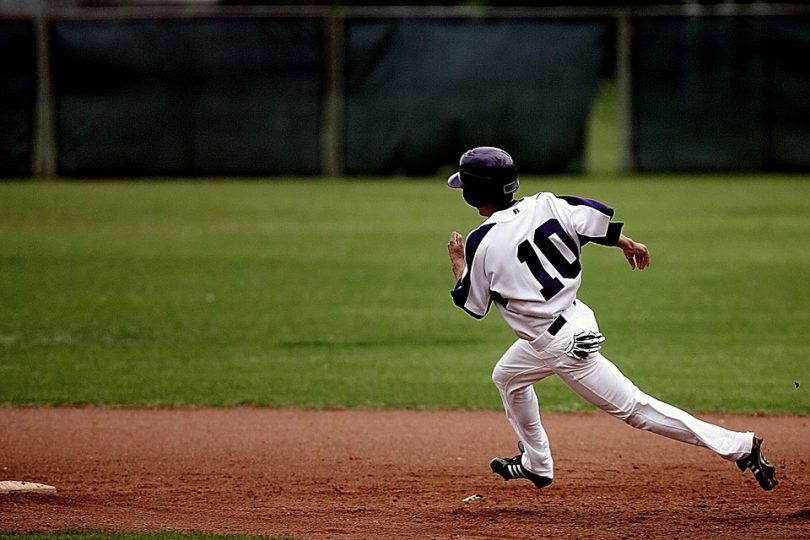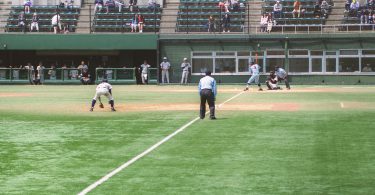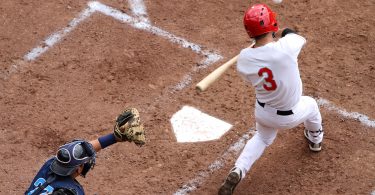The Situation:
There are runners on 1st and 3rd with 2 outs and an 0-2 count to the right-handed hitting 9-hole batter. The score is 4-1 in favor of the offense in the top of the 5th inning. The batter is a defense-first shortstop with a weak bat and the third base coach doesn’t like the count or right-on-right match-up at the plate. Instead of going with the low percentage, the coach decides he is going to try to steal a run with some trickery on the base paths. It’s a risky move, but he thinks the deck is stacked against his hitter. He gives the sign to the base runners.
The Play:
As the pitcher comes set looking at the runner on third base, the runner at first breaks towards second base. The first baseman and catcher yell to step-off, sending the second baseman crashing towards the baseline and the shortstop scrambling to second base.
The pitcher, who was looking at the runner at third when he heard the commotion, steps off and spins glove-side towards the runner leaving 1st. As soon as he looks away from the runner at 3rd, the runner takes off for home. As the pitcher faces the trail runner, he puts on the breaks and starts dancing, equal distance from the first baseman and the crashing second baseman. The pitcher is momentarily confused by the distraction, and takes a few steps towards the dancing runner. By the time he reacts to the “FOUR, FOUR” call and turns back towards home, he knows it will be too late. Frantically, he turns back to the only out left on the table and tosses the ball to the shortstop. A few throws after giving the ball up, the tired runner is tagged out.
The Outcome:
The offensive misdirection play works. The offense happily exchanges the out for the run and the play worked to perfection. Meanwhile, the pitching coach for the home team is shaking his head at the failure of his player to recognize and execute defensively.
What Went Wrong:
Just like in high school, many college coaches will have some base running trickery in their back pocket. In this case, the runner at 1st is merely a decoy trying to steal the attention and create a distraction so the runner at 3rd can score. Plays like this are common when the offense doesn’t like its chances or the matchup at the plate, just like this situation.
The first mistake is the failure to recognize that given the current situation, there is additional incentive to try to “steal” a run. The second mistake is the right-handed pitcher turning glove-side. Turning glove-side immediately takes away vision of the runner at 3rd, allowing him more time to extend or break for home. The final mistake is the pitcher stumbling after the dancing runner instead of giving the ball up to a fielder. For each step the pitcher takes, the runner from third is gaining even more ground towards home.
Here is what the pitcher should have done:
- Reminded himself that now would be a good time for base running trickery.
- Step off the rubber, face the runner at third, with the ball in his throwing hand. Freeze the runner at 3rd by showing him the ball.
- Spin arm side, so the runner at 3rd remains in his peripheral vision longer.
- Give the ball up to either: A) the crashing second baseman who has cut distance to the runner (best option) B) the shortstop who has vision of the entire field (including the runner at third) or C) the first baseman (if and only if the runner is running back to 1stand it will be a catch-tag play.
By following these steps, the pitcher gives the team the best chance to either get the base-runner out to end the inning before the frozen runner at third can score or at worst, end up with runners at 1st and 3rd and an 0-2 count on the hitter. Either way, the offense has to earn their run the old fashion way, just like you want!






